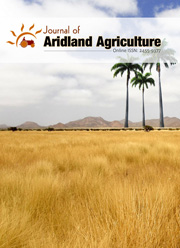CASSAVA FORTIFICATION AND QUALITY EVALUATION
DOI:
https://doi.org/10.25081/jaa.2017.v3.3364Abstract
The broad objective of this work is to improve the nutrient content of cassava flour by inclusion of cowpeas seed flour and cassava leaf powder to assess the effects of the cowpeas flour and cassava leaf powder inclusion on the nutrient quality and acceptability of the flour. Cassava tuber flour was fortified with cowpeas flour and from cassava leaves at 20% and 30% of dry weight. Standard methods were used for the determination of parameter such as protein and carbohydrates. All samples were analysed for potassium, phosphorus, calcium, magnesium, iron, and cyanide. Unfortified cassava had significantly lower (P<0.05) values (protein: 0.942%, P: 0.093%, K: 0.749 Mg: 0.052%, Fe: 5.008ppm) than fortification with both cowpeas flour and cassava leaf flour. Fortification with cowpeas flour did not significantly (P>0.05) change the Ca content however they were significant (P<0.05) increases cassava leaf flour. Cyanide content increased significantly for Treatment LF20 and LF30 but remained unchanged for Treatment CW20 and CW30. Both cowpeas and cassava leaves had significantly (P<0.05) lower carbohydrate content than cassava tuber flour. Both cowpeas and cassava leaves are excellent for fortification but cassava leaves have to be used with additional pre-treatments to reduce the cyanide content in them. Organoleptic qualities analysed indicate high acceptability of fortification of cassava tuber flour with cowpeas flour.




 .
.